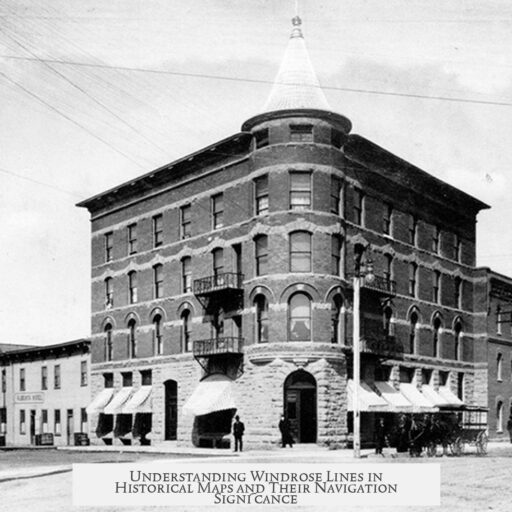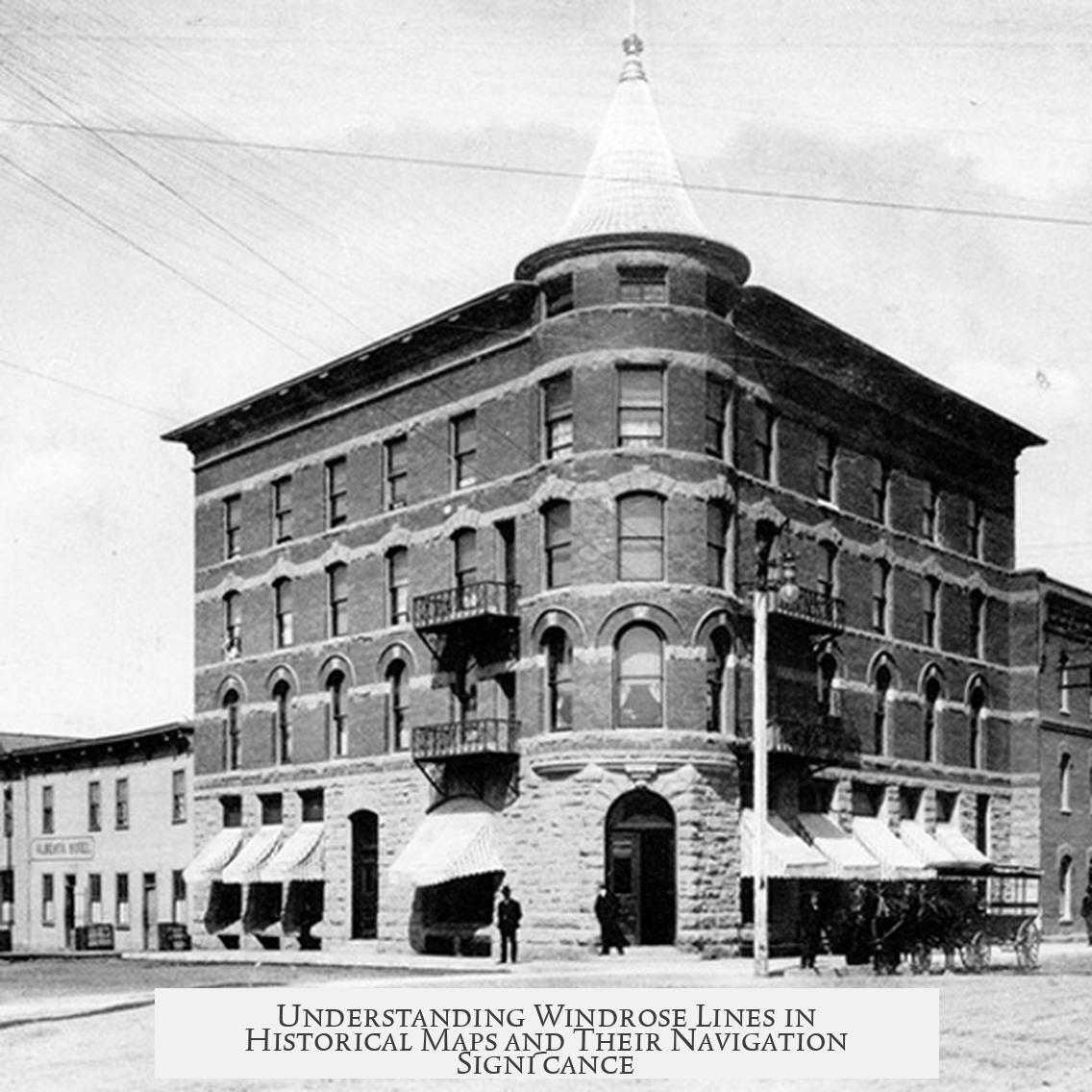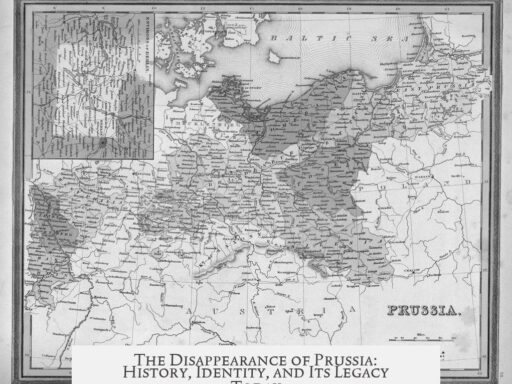Those lines in old maps are called windrose lines, and together they form a windrose network. Their main role is to guide navigation by showing directions from one point to another.
These lines address the tricky task of representing the round Earth on flat paper. Early maps often lacked modern map projections. Instead, cartographers used windrose networks to connect locations effectively. The lines help sailors plot courses and navigate the seas.
Because the Earth is spherical, the shortest path between two points is generally curved. A straight line on a flat map does not always represent the true shortest route. Windrose lines assist in correcting this by showing consistent compass bearings. Sailors could follow these lines to maintain their headings.
Windrose networks focus on direction rather than detailed land features. They resemble a coordinate grid for sailing courses more than a traditional map. This was crucial before the development of advanced projection methods and modern navigation tools.
- Windrose lines form a network of compass directions radiating from central points.
- They were primarily used to determine rhumb lines or loxodromes, paths of constant compass bearing.
- These lines helped overcome the challenge of translating the globe onto flat charts without distortion.
- Early navigational charts relied on these networks to aid sailors at sea rather than to depict land geography.
This system ensured mariners stayed on course across vast oceans, using simple tools like compasses and charts. The windrose networks made early long-distance sea travel safer and more reliable.
In summary:
- Windrose lines are directional guides on old maps.
- They help navigate a spherical Earth on flat paper.
- The lines show sailing directions, not detailed land features.
- These networks were essential before modern map projections.
What Are Those Lines in Old Maps? Unraveling the Mystery of Windrose Networks
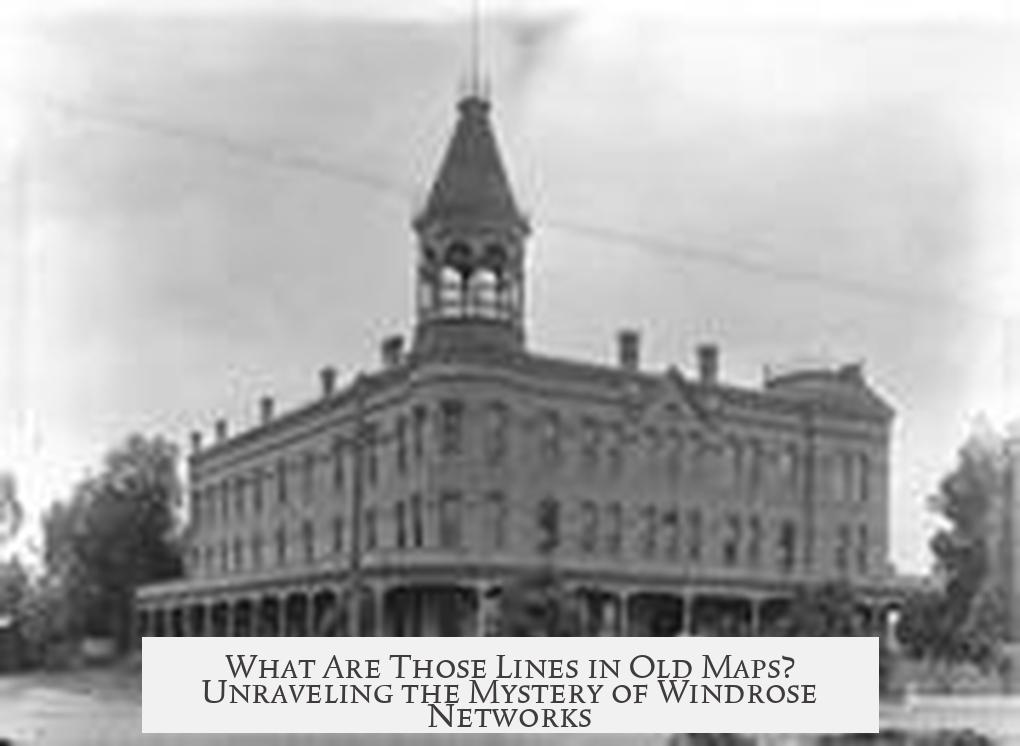
Ever stared at an old map and thought, “What are all these crisscrossing lines for?” They’re not just fancy doodles. Those fascinating lines are called windrose lines. Collectively, they form a windrose network. These lines hold a clever secret: they were sailors’ best friends, guiding ships safely across vast oceans. So, those lines in old maps are windrose lines designed to aid navigation by providing direct sailing paths to destinations.
Let’s dive into this intriguing old-world navigation tool and discover why those lines matter so much.
Why Were Windrose Lines Needed? Mapping a Round Earth on Flat Paper
Imagine trying to flatten an orange peel without tearing it. That’s basically what early cartographers faced when they tried to draw the round Earth on flat paper. The Earth isn’t flat, but maps needed to be. They wrestled with representing continuous, curved surfaces—spherical geometry creates a headache that no straight ruler can fix.
Early navigational charts didn’t have the luxury of modern map projections, like Mercator or Robinson. So, how do you connect distant shores on flat parchment without warping reality too badly? Enter the windrose network.
The Magic Behind Windrose Networks
A windrose network looks like a web of lines radiating from multiple points on the map. Each windrose line represents a constant bearing or direction. Sailors could pick a path—say, northeast—and follow that line to reach their destination.
Think of the windrose lines as a grid, but one based on directions rather than distances. Because the Earth is round, the shortest route between two points often curves. For example, flying from New York to London, the best path looks like a bow on a globe—not a straight arrow on a map. However, on these old maps, if you sailed following a windrose line, you’d always travel a fixed compass bearing, making navigation simpler even if it wasn’t the absolute shortest path.
This fixed bearing concept, called a rhumb line, lets sailors keep their compass steady. In ocean navigation, that’s golden. Consistent direction beats constantly recalculating changing headings in stormy seas.
Helping Sailors Chart Their Course
One huge benefit of windrose networks? They weren’t just pretty lines; they showed practical sailing routes. Imagine being on a wooden ship centuries ago, surrounded by endless blue. You needed a reliable method to decide which way to steer. Windrose lines saved the day by mapping optimal sailing courses and bearings directly onto the chart.
This network was less about showing detailed coastlines or the shapes of continents. Instead, it was a map of sailing directions. It told you: “Steer this way, keep your compass at 45° instead of wandering blindly.”
Navigators cross-checked the windrose network with visible landmarks, stars, and wind patterns. This synergy of tools meant ships could sail safer and faster. Think of it like having a GPS before GPS existed—except the ‘satellite’ was a complex compass rose and the ‘signal’ was some math and a sturdy timber ship!
Windrose Lines vs Modern Navigation: What’s Changed?
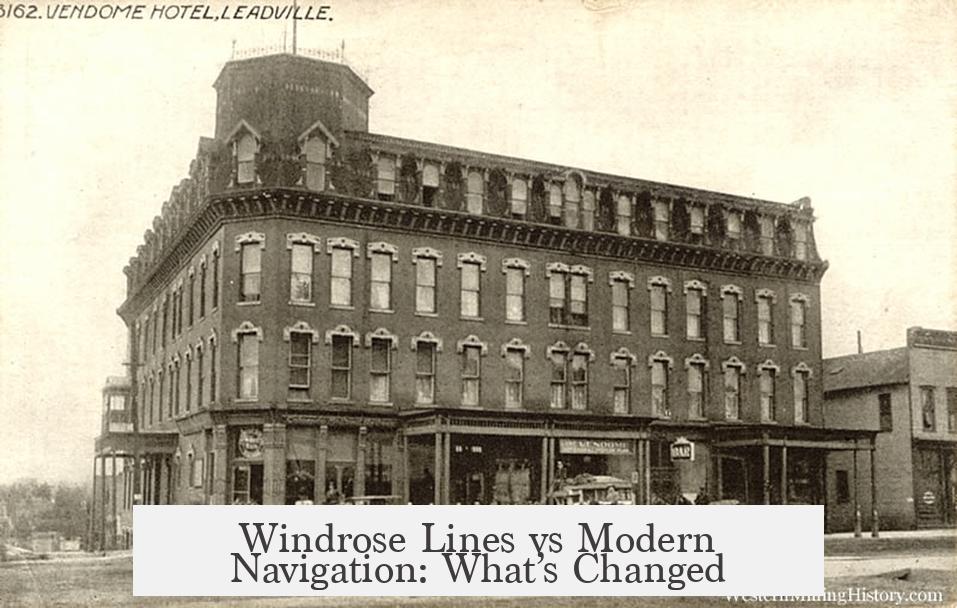
Today, we have digital maps, GPS, and satellite imagery. We can plot routes with pinpoint accuracy and adjust for currents and winds in real time. Back then, the windrose network was the cutting edge. It offered a practical workaround for the challenge of a spherical Earth on a flat chart.
Unlike modern projections, early windrose lines didn’t deform distances as heavily because they focused on direction over geographic precision. It’s a bit like prioritizing “which way to go” instead of “how far exactly.”
Curious to see it in action? Old port cities often featured maps plastered with windrose networks. Each compass rose often had 32 points, representing the different directions sailors could follow. These lines crisscrossed the seas, creating a navigational spiderweb that helped legendary explorers like Columbus and Magellan stay on course.
Quick Tips If You Spot Windrose Lines in Historical Maps
- Check the compass roses: The starting points of those radiating lines usually mark key harbors or coastal locations.
- Follow the lines: They guide you through steady compass bearings rather than shortest distances.
- Remember the era: Old charts prioritized direction-for-navigation over geographic accuracy.
- Think like a sailor: These networks map routes, not just places.
Wrapping It Up: More Than Just Lines on Paper
Next time you peek at an ancient map and get lost in those labyrinthine lines, remember: you’re looking at centuries-old navigation wisdom relics. Windrose networks helped bridge a huge gap—they translated a round world for flat paper and made the invisible compass work its magic.
They tell a story of human ingenuity—how sailors mastered the globe long before satellites and smartphones.
“The windrose network intertwines art, science, and survival, charting new courses across uncertain seas.”
So, those lines aren’t just ink and paper. They’re a testament to navigation’s challenges and triumphs, a reliable guide for voyagers daring enough to follow the windrose paths across mysterious oceans.
